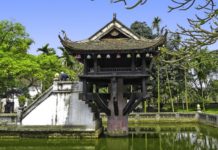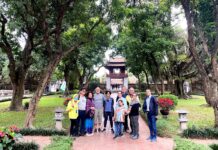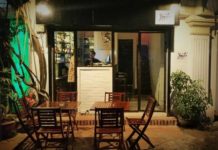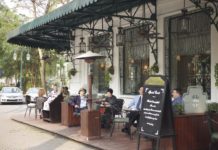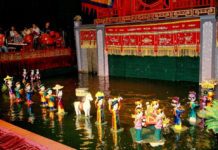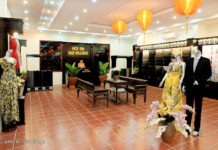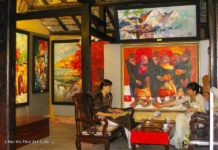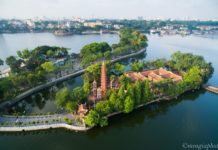If you plan on visiting Hanoi, the former capital of Vietnam, you will undoubtedly be struck by the sheer number of motorbikes on the roads and the bustling atmosphere of the city. However, beyond its chaotic exterior, Hanoi holds a wealth of history, grandeur, and enchanting stories that can captivate any traveler. Amidst the hustle and bustle, there is a hidden gem of tranquility and cultural significance – the temple de Littérature.
Histoire
The Temple of Literature was established in 1070 by Emperor Ly Thanh Tong as a place to honor Confucius. It also served as the first national university in Vietnam, exclusively educating members of the elite class such as princes, nobles, and bureaucrats for over 700 years. Despite facing wars and disasters, the Temple of Literature has managed to preserve its architectural and cultural value.
Architecture
Covering an area of over 54,000 square meters, the Temple of Literature is surrounded by an ancient brick wall and consists of five courtyards, each with its own unique style. The main parts of the temple are described below.
1. The First Courtyard – Đại Trung Môn

The first courtyard, known as Đại Trung Môn, is entered through the Great Middle Gate. Stepping inside, one is immediately greeted by a serene green space, far from the chaos of Hanoi. The two gates on either side, Virtue Gate and Talent Gate, symbolize the king’s expectations for students to achieve high levels of education. Atop the gate, there is a fish which represents a student striving to pass exams and become a government official, much like the legend of a fish transforming into a dragon by leaping over a waterfall.:
During that time, students were taught about Confucius’ perspective, literature, and Chinese culture. The exams, which were held annually, included three rounds: the Regional exam, Hương examination, the National exam, Hội examination, and the Royal exam, Đình examination. If someone was not successful in one round, they had to wait for three years to try again.
2. The Second Courtyard – Khuê Văn Các
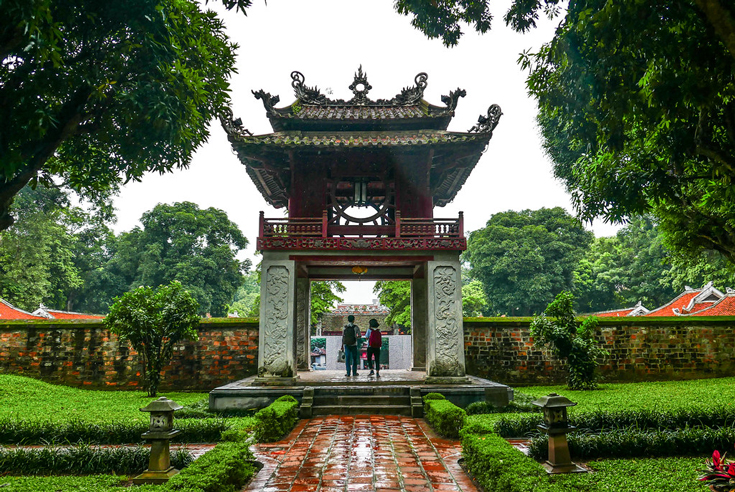
The Second Courtyard, also known as Khuê Văn Các, is a well-known symbol of Hanoi and can be seen on the back of the 100,000 Vietnam dong banknote. This unique architectural structure was built in 1805 with four whitewashed stone stilts. The name “Khue” comes from the brightest star in the sky and the shape of the whole constellation resembles the Chinese character for Literature, symbolizing the desire for a prosperous and advanced education. Inside the courtyard, there is a thousand-year-old bronze bell that is only rung on special occasions.
3. The Third Courtyard – Thien Quang Well
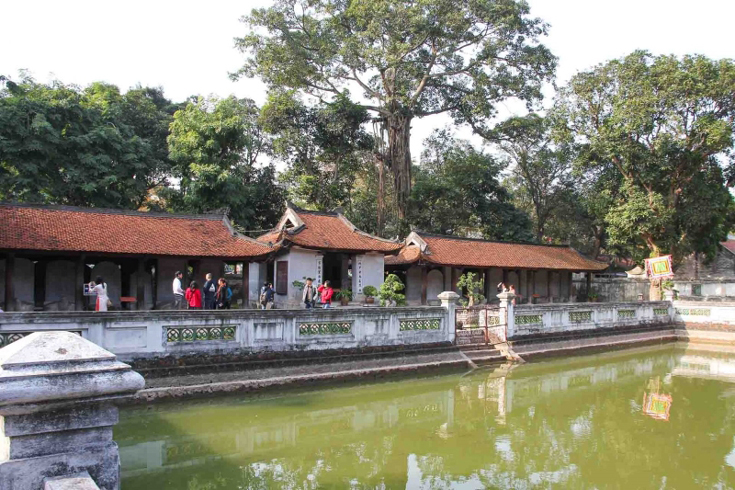
Moving on to the third courtyard, also called Thien Quang Well, it has a square shape and is known as the Well of Heavenly Clarity. The square shape represents the earth while the circular top of the pavilion represents the sky, representing the harmony between the two. This well serves as a mirror, absorbing the best essence of the universe. Additionally, it also allows students to see themselves and prepare before entering the sacred inner part of the temple.
On one side of the courtyard, there is a unique house of stelae, which is the only one of its kind in the world. Stone turtles carry large stelae on their backs, praising Confucianism and the Emperor, and containing information about the exams and the Doctors. Originally, there were 116 stelae, but due to wars, only 82 remain today. The size and shape of the turtles reflect the architectural style of the dynasty.:
“Why are turtles significant in Vietnamese culture?”
The reason can be found in Vietnamese cultural beliefs. Turtles hold a special place among the four sacred animals, which also include the Dragon, Unicorn, and Phoenix. Not only do turtles have a deep connection with the Vietnamese people, but they also symbolize longevity and wisdom, carrying on their backs knowledge and success.
4. The Fourth Courtyard – Đại Thành Môn

The Fourth Courtyard, known as Đại Thành Môn, is considered the gateway to great success in Vietnamese culture. It features the impressive House of Ceremonies and a sanctuary dedicated to Confucius. The courtyard stands out with its red columns, wooden beam ceilings, and antique-style lanterns.
At the center of the sanctuary lies an altar, a common feature in Vietnamese households where ancestors are worshipped. The altar holds five essential elements – Metal, Wood, Water, Fire, and Earth – along with offerings and the scent of incense. Visitors should take note of the significance of these elements.
5. The Fifth Courtyard – The Grounds of Imperial Academy
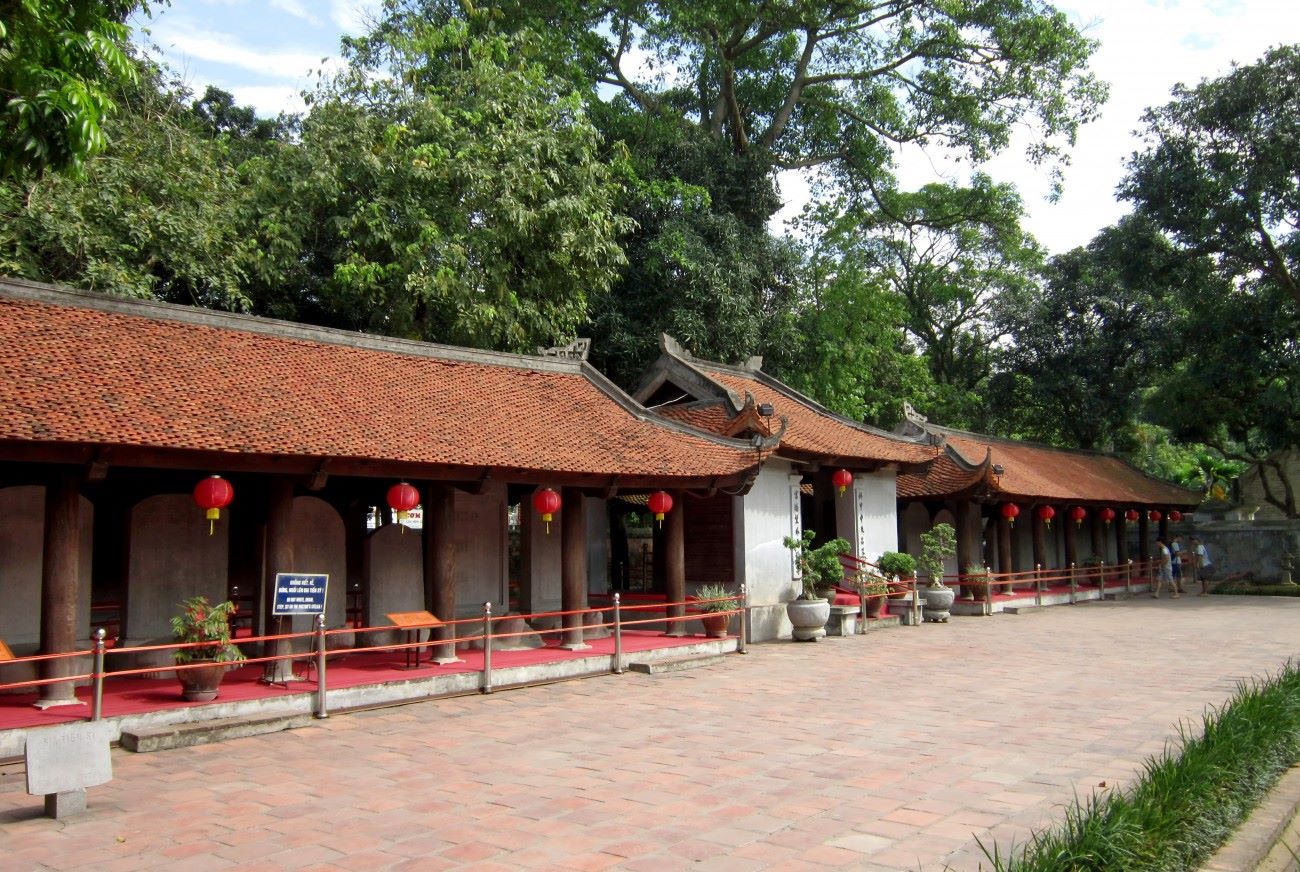
On either side of the altar, there is a pair of cranes and turtles, representing harmony and eternity. Moving on to the Fifth Courtyard, visitors will find a two-story building. The ground floor houses a statue of Chu Văn An, a renowned teacher and the first rector of the Imperial Academy. The upper floor is dedicated to the three kings who played a crucial role in the establishment of the temple and academy.
Comment aller là
Pour atteindre le Temple de la Littérature Hanoï, located 23 km west of Hoan Kiem Lake and south of Thang Long Imperial Citadel, one can take a taxi for a 10-minute ride or walk for about an hour. Here are some tips for visiting the temple:
1. Respect the sacredness of the temple and its surroundings.
2. Take note of the cultural significance of turtles and other elements within the temple.
3. Learn about the history and contributions of the three kings and Chu Văn An.
4. Follow proper etiquette when visiting the altar and other sacred areas.
5. Take your time to explore and appreciate the beauty of the temple and its courtyards.:
To reach the temple, it will only take you 15 minutes to walk from Hoan Kiem Lake. However, if walking is not your preference, you can always opt for a cyclo, a human-powered bike taxi. Don’t worry, the cost is usually very reasonable.
Conseils pour visiter le temple de la littérature à Hanoï
Just remember to bring cash as the ticket office does not accept credit card payments. Also, try not to arrive too late as it’s recommended to spend at least an hour exploring the Temple of Literature. Keep an eye on the time so you can make the most out of your visit.
It’s important to note that Hanoi can get extremely hot during the summer, especially in the afternoon. If you’re not comfortable with the heat, it’s best to plan your visit in the morning.
Feel free to take photos inside the temple, but please be respectful and avoid laughing or talking loudly in the worshipping area.
Hanoi is a fascinating city with many interesting attractions and sites to explore. For those interested in Vietnam’s rich history or those who appreciate unique architectural and cultural elements, the Temple of Literature is a must-visit destination.


